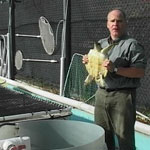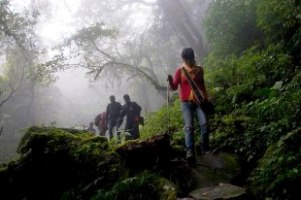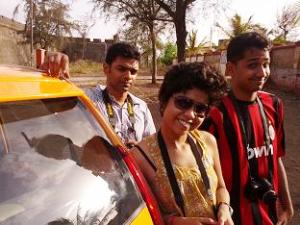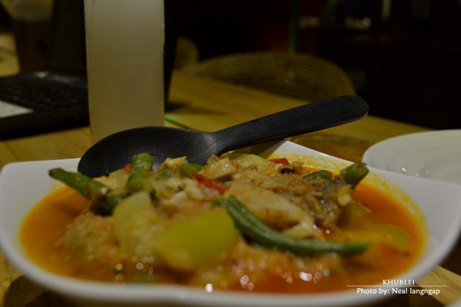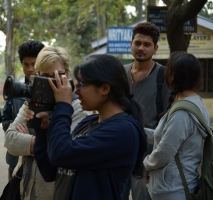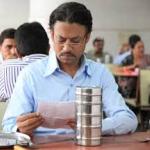How many of you rued the fact that you were born too late? Too late to be a part of the Woodstock festival in the summer of 1969? I confess I was one of them. But life always offered a second chance to people like me those who led a pious life. And they called it the Ziro Music Festival. 14th, 15th and 16th Sept. 2012 are not the days I would forget in a hurry.
I had almost given up on the idea of going to Ziro as I was scheduled to be on a shooting assignment to Upper Assam. But due to the recent ethnic conflict in Assam my shooting got postponed. So when my friend called me up on the 13th evening to ask me if I wanted to go to Ziro I said yes immediately. He declared we should start by 3.30am. "3:30am? Why 3:30am? That's the time I have my dinner and go to sleep" I exclaimed. After exchanging a few blows we arrived at a conclusion that 3:30 am is indeed the perfect time to start our 500km plus drive from Guwahati to Ziro.
It was raining when we started from Guwahati. It was raining when we reached Tezpur. It was still raining in Lakhimpur and it was raining when we entered Arunachal Pradesh. It was raining when we crossed Potim and as expected it was raining when we reached the festival venue at Ziro at 5pm.
The first thing I noticed was the mud. People were balancing on narrow wooden planks placed in the mud to walk through the gate. There weren't too many people inside. Most of them were my friends from Guwahati and Imphal who had also just reached. The people I didn't recognize looked like band members. All in all around 150 people were present. The venue had three small hillocks next to each other surrounded by paddy fields, millet and a small kiwi plantation. The middle hillock had a backdrop of pine trees that was the stage area and the one on the right was the food court. The one on the left was vacant and we decided to set up camp there. Thoughtfully the organizers had installed a toilet and a water tap there. The spot was actually a grazing field for cows and naturally it was filled with cow dung. There were three piles of cow dung east of my tent and two piles on the west. North was lots of mud and south was less mud.
This was to be my home for the next three days. By now most of my body was covered with mud. Soon a dozen more tents came up in places that had less mud. The setting was perfect. It was getting more like Woodstock now. I was ready to delete my adulthood and carry on from my mud covered childhood days when I used to walk about in my underwear. But fearing ostracization from my well-meaning friends I decided to keep my mud soaked clothes on.
The proceedings on stage had started. Pema Khandu, the tourism minister declared the festival open. He happily announced a contribution Rs 5 lacs for the festival. The crowd cheered in approval. Now where else will you find such cool politicians? Had it been in Assam the moral activists and TV channels would have probably hounded the organizers out of business by now. The difference between tribal wisdom and the pettiness of the rulers of Assam was stark.
Twenty bands from India and the northeast played over three days. The overall quality of music was pretty impressive. The Indian music scenario has gradually progressed over the years. During my college days in Delhi University in the early nineties most bands became big doing covers of Deep Purple, Scorpions and the likes. Now I saw a lot more original and experimental stuff. These new bands would not be caught dead doing covers. This maturing of music is heartening. Some of the Indian bands now have foreign members who bring with them their own sounds. The result is eclectic. My favorite of the lot was Alisha Batth and Tritha. Alisha is a folk rock songwriter/singer from Bombay. Watching her solo act with just an acoustic guitar reminded me of a young Joan Baez of the seventies.
Tritha is a trained Indian classical singer who has perfected the art blending different genres of music to produce what I would call top class world music with influences of Hindustani, Bengali, grunge and punk. Other notables were Digital Suicide from Assam, Peter Cat Recording Co. from Delhi, Menwhopause from Delhi, The Dirty Strikes from Manipur and Dayglocrazie from Delhi. The closing act on the last day was our very own Godfather of Rock Lou Majaw. Lou attracted the biggest crowd in the three days and the crowd wouldn't let him end the show. He had to come back on again after his set ended. Forever young at 65 years, none other can match his sheer energy on stage.
The rain stopped for a while to gather its breath. I wandered back to my tent. The less mud south of my tent became more mud by now. I flattened a 2-litre Bisleri bottle to make a mat to sit on in the mud. With some difficulty I managed to make a fire to dry my cloths. The lone star in the sky reminded me of a song. I pulled out my guitar from the tent and began humming 'mur minoti tora hoi jodi'. Soon my friend came out from his tent with his guitar and joined me. Then another tent opened and out came a djimbe that was joined by another djimbe and a flute and a harp too. In our collective drunken stupor we made enough music to cut 7 albums. Or so I thought.
But the Ziro Music Festival was not about music alone. There were lot more things to do. There was Vagabond Expeditions from Assam who organized a bicycle expedition from Kaziranga to Ziro as a part of the festival. One could rent/borrow cycles from them and ride around Ziro. I rescued a few pretty Apatani girls who got their cycles stuck in the mud hoping that they would give me their mobile no. They didn't. I stopped rescuing anybody after that. A bird watching trip was also set up for those who were interested in photographing them.
But I wasn't interested in birds of the flying type. Those inclined towards art could pick up a painting from Ranjan Engticode's traveling art exhibition called Metropolis. Many of his paintings depicted the burning issues raging in the northeast today. Good work he did.
The food court was the center point for most of the audience. Like in most other such gatherings in the northeast, pork was the most popular item in all the stalls. There was a Naga stall, a khamti stall and many other stalls that offered a variety of delectable pork dishes. Barbecued, smoked, roasted or with bamboo shoot. For those who don't like pork there was mithun meat, rat meat or dog meat. And of course, apong (local beer). That too a variety of them. Apong made from rice or millet in different shades of brown and white. I picked up a pale white. There is nothing better I like than sit by the fire with a mug of apong, pork roast with sticky rice and a guitar in hand. Life is good sometimes.
The Ziro Music Festival cannot be compared with the other much bigger festivals that happen in India like the Bacardi NH7 festival, Mahindra Blues Festival or the Sulafest in Nashik. Those are branded, well-packaged corporate music festivals that attract crowds like 15,000 or more. This is where the Ziro Music Festival distinguishes itself from the others. It was a complete festival where music, art, culture and adventure met.
With no big corporate body behind it, there was nothing to sell. In fact it was the Arunachal Government, which was one of the sponsors. The whole atmosphere was very natural, ethnic and laidback that went well with my own sensibility. So long as the organizers avoid big corporate sponsors the Ziro Music Festival will retain this rustic character that makes it different than all the other music festivals of India. I mean where else can you light a fire to keep yourself warm, sit by your tent and watch some of the best acts perform in front of you. Let's hope there is an encore next year with a bigger attendance. Ziro Fest, take a bow.
Find us on facebook: facebook.com/TheThumbPrintMag









